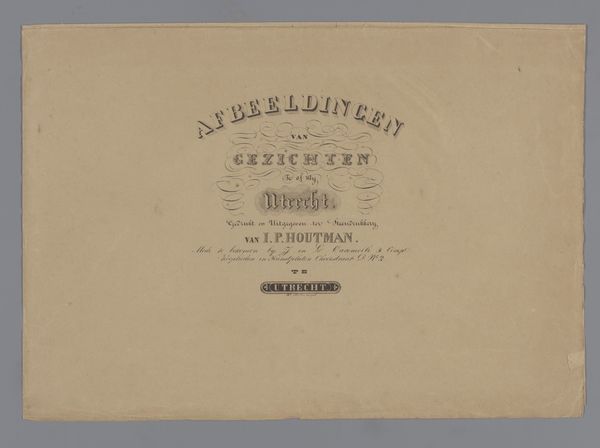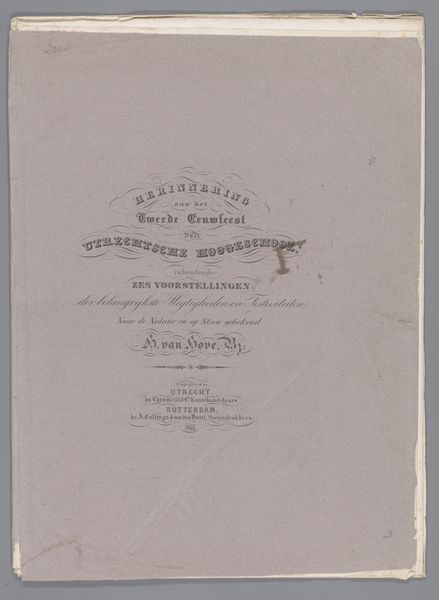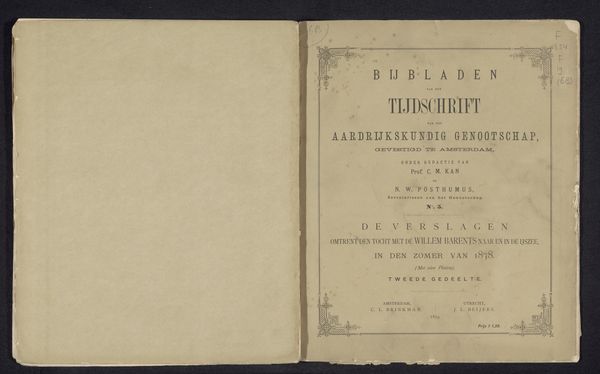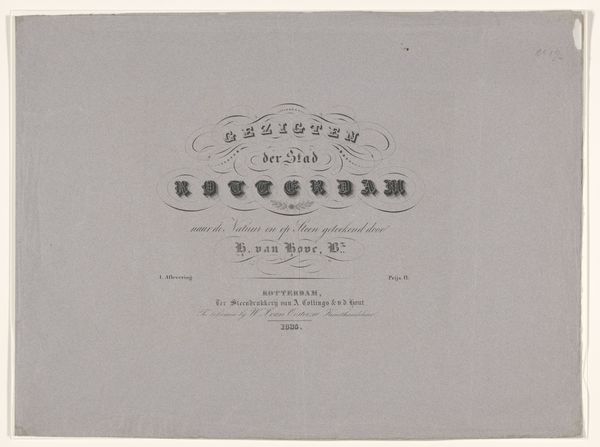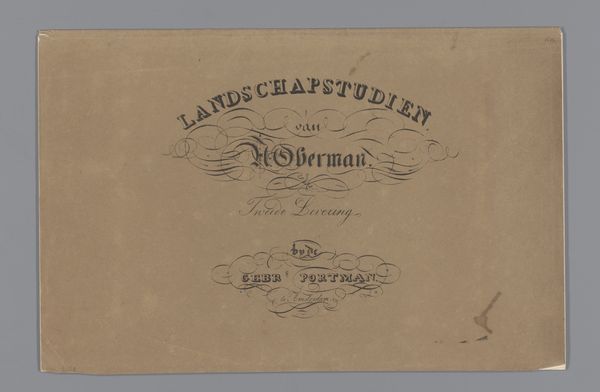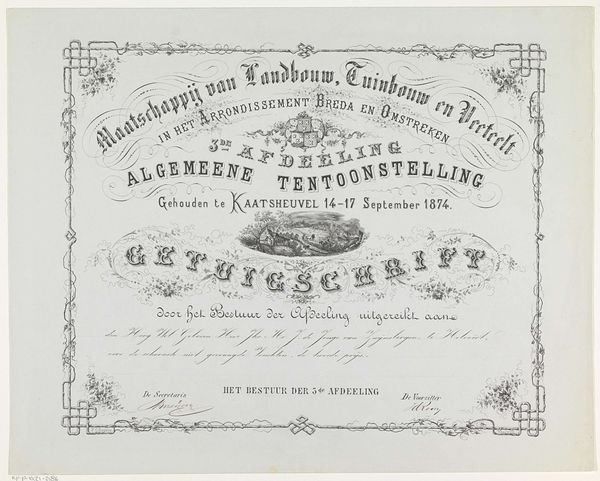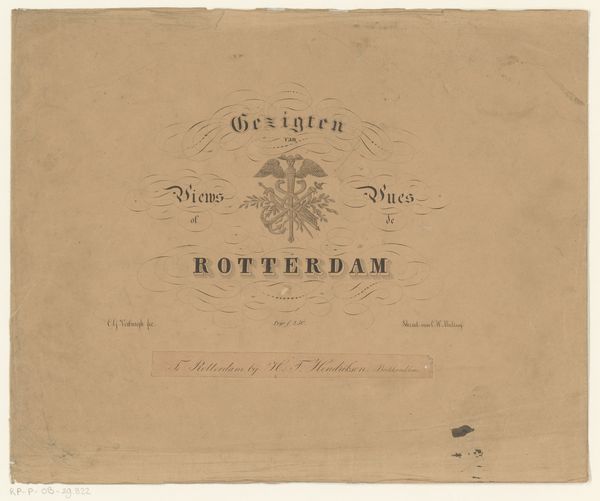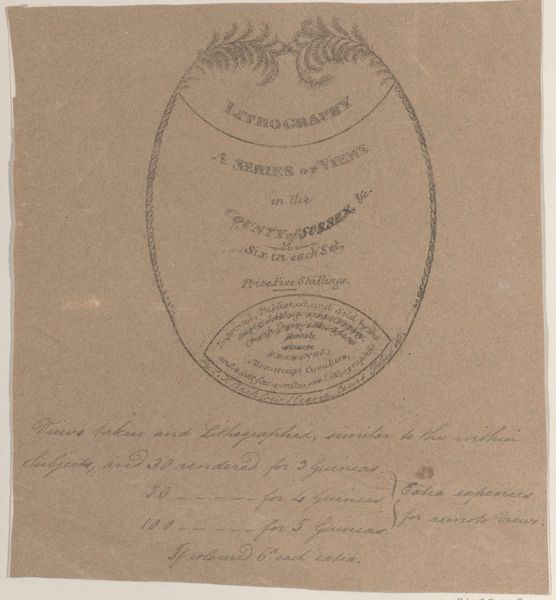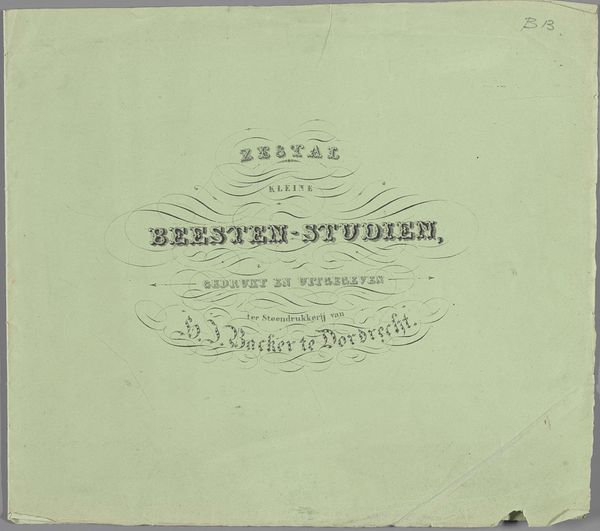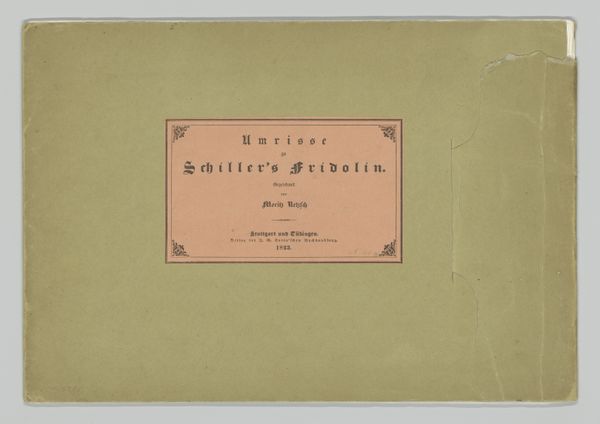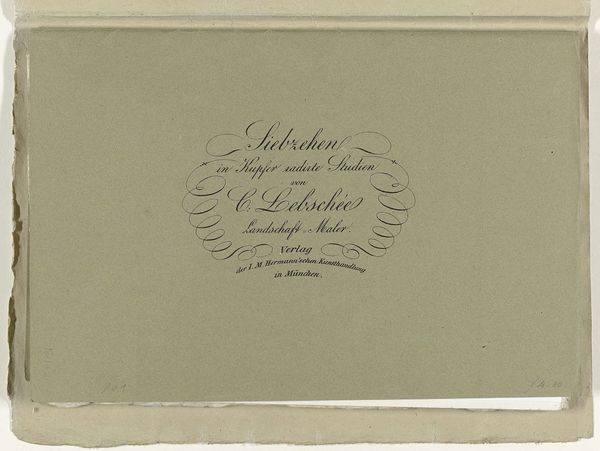
drawing, lithograph, paper
#
drawing
#
lithograph
#
paper
#
watercolor
Dimensions: height 260 mm, width 332 mm, height 332 mm, width 510 mm
Copyright: Rijks Museum: Open Domain
Curator: Here we have a cover illustration by Jean Augustin Daiwaille, entitled "Omslag Beeld-studien voor Eerstbeginnende," dating back to 1820-1826. It's crafted using lithography and drawing on paper, a textbook really. Editor: Immediately, I see a kind of austere gentleness, perhaps stemming from the aged, soft blue of the paper and those graceful calligraphic fonts. It presents as quietly authoritative. Curator: Precisely. Consider the Dutch context of early 19th century education. It speaks to a period when artistic instruction began standardizing, aiming to shape a populace steeped in visual culture for both national identity and industry. It must have been for beginning art students. The printing and images within probably reflect acceptable themes of that era, but also might defy that paradigm to some extent, too. Editor: And visually, the font choices speak volumes. The elaborate cursive hints at established artistic traditions while the bold sans-serif suggests a newer, more accessible pedagogical approach to art. I would wonder about the social implications of its use then: Did this allow for new interpretations of historical imageries? Did this textbook disrupt classical conventions or subtly reinforce a Dutch status quo through sanctioned artistic expression? Curator: An important observation! This cover signals both an intention to democratize art education and, inevitably, embed social values into the learning process. Editor: So, its visual rhetoric bridges the formal artistic world and an emerging, expanding middle class. The choice of accessible lithography broadens the base of aspiring artists, suggesting social mobility and cultural participation – albeit carefully guided participation. Curator: Yes, in its materiality and graphic style, the image really encodes its moment. Now that you mention lithography, the very technique of its production makes it particularly suited to spreading those beliefs, doesn’t it? Editor: Yes, seeing how knowledge, beliefs, and aesthetics converge is pretty impressive. Now when I look at it I think about what other symbols and visual codes hide underneath its literal cover, just waiting to be decoded in the context of history. Curator: Absolutely. Each artifact contains untold stories. Editor: Indeed. I leave with a fresh appreciation for the powerful blend of instruction and ideology it contains.
Comments
No comments
Be the first to comment and join the conversation on the ultimate creative platform.
